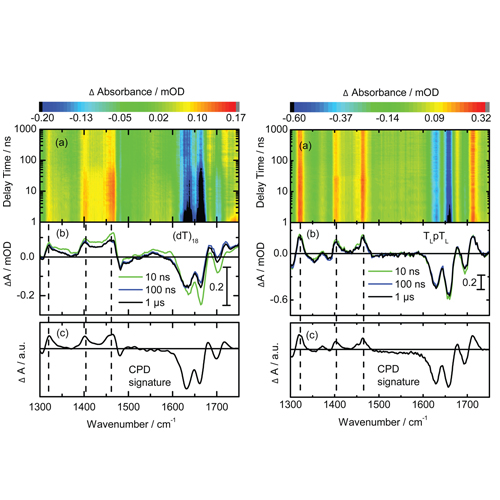Mechanism of the Decay of Thymine Triplets in DNA Single Strands
15-Apr-2014
Chemical Physics Letters, 2014, DOI: 10.1021/jz500364g, 5 (9), pp 1616–1622 published on 15.04.2014
The decay of triplet states and the formation of cyclobutane pyrimidine dimers (CPDs) after UV excitation of the all-thymine oligomer (dT)18 and the locked dinucleotide TLpTL were studied by nanosecond IR spectroscopy. IR marker bands characteristic for the CPD lesion and the triplet state were observed from 1 ns (time resolution of the setup) onward. The amplitudes of the CPD marker bands remain constant throughout the time range covered (up to 10 μs). The triplet decays with a time constant of 10 ns presumably via a biradical intermediate (lifetime 60 ns). This biradical has often been invoked as an intermediate for CPD formation via the triplet channel. The present results lend strong support to the existence of this intermediate, yet there is no indication that its decay contributes significantly to CPD formation.











